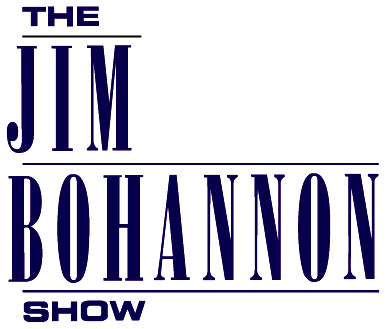Where to Find the Next Big Thing
and What to Do When You Find It.
We all dream of finding the next big thing, of buying Apple stock at the IPO price of $22 per share, or giving the green light to a brilliant new product that will save the company we own or work for, and maybe even turn it into the industry leader. What can we learn about innovations of the past that will help us spot the critical innovations of the future - and tell us what to do when we find them?
To begin with, we probably won't find the next big thing in a Fortune 500 company, no matter how slick their website and their corporate headquarters may be. Huge innovations seldom come out of big companies, where rules, procedures, bureaucratic roadblocks, territorial disputes, and office politics get in the way. More often, innovations come from relatively small groups, either in isolation or on the periphery of a large corporation: places like the Skunk Works at Lockheed-Martin or Bell Labs at American Telephone and Telegraph Corporation (AT&T). It's probably a law of nature: innovative R&D doesn't work nearly as well when the bean counters and the HR minions are looking over your shoulder.
But there's another side to this equation: the innovators need someone who recognizes the value of their ideas and inventions, someone who will sponsor their creations and give the products of their imagination a foothold in the real world.
One of the most famous cases of a small group with a big idea, as well as the people who saw the potential value of their innovation, started in the kitchen of a New York apartment during the Great Depression.
After physicist Chester Carlson set his kitchen on fire while trying to invent a dry photography process (a process that does not use the usual photographic chemicals), he continued his experiments in a rented room in a house in Queens, NY; on October 22, 1938, he and physicist Otto Kornei made the critical breakthrough that showed him that the process would actually work. Patents in hand, Carlson tried to get development funds from more than twenty companies (including IBM) between 1939 and 1944 - with no results. After Russell W. Dayton, a young engineer at the prestigious Battell Memorial Institute, noticed Carlson's invention, Carlson got a chance to demonstrate his new process at the Institute. Impressed by his discovery, the leadership of the Institute agreed to act as Carlson's agent and sponsor his research.
In 1946, the Haloid Photographic Corporation, a manufacturer of photographic paper, licensed Carlson's process, at the suggestion of their head of research, John Dessauer. You probably haven't heard of Haloid Photographic Corporation, because they later changed their name - to Xerox Corporation. The copy machines in every office and library are remote descendants of the first models that Haloid made, based on Carlson's discoveries. If Dayton and Dessauer hadn't spotted the potential in Carlson's invention, the whole photocopier revolution might never have happened; and Xerox, a blue-chip corporation with annual revenue of over $22 billion, would never have existed.
By 1970, Xerox was a highly profitable corporation, able to afford a major research and development facility; in fact, they built two research centers, both of which are still in operation today. The west coast R&D center was given an amazingly generous budget and freedom from bureaucratic interference. "We could just research," one of the engineers recalled later. "It was heaven." The engineers used email, file-sharing, and the Internet (then called the Arpanet) decades before they became available to the public. Their mission was to invent the office of the future; and that's exactly what they did. You probably haven't heard of the Xerox Alto (1973) or the later model, the Xerox Star (1981), which featured a mouse, a desktop, a graphic user interface, and Ethernet; in other words, the basic look and feel of computers today
The Xerox Star was not a success; it was expensive (up to $100,000 per installation) and not nearly as efficient or a functional as the simplest modern notebook. And Xerox didn't know how to market the Star; only 25,000 were ever sold. But the Star and its predecessor the Alto had potential, which was spotted by two young Silicon Valley entrepreneurs: Jef Raskin and Steve Jobs. Raskin founded the Macintosh project to incorporate the dramatic technological advances of the Star into a machine that the average consumer could afford. After Steve Jobs took over the Macintosh project, he traded Apple stock for a glimpse at the crown jewels of innovation: he was allowed to visit Xerox's Palo Alto Research Center, otherwise known as Xerox PARC.
Job's visit to Xerox PARC to see the lab's inventions is now the stuff of legend, with lots of romantic stories surrounding the episode. What is clear is that Jobs was impressed by the technologies he saw there and incorporated them into the Macintosh project. Jobs and his team didn't invent the brilliant technology that went into the Macintosh; instead, they engineered, packaged, and marketed the technology in a machine that worked, that was much more affordable than the Star, and that set standards for a desktop computer for the average consumer. The first Mac looks primitive now, but it was the direct ancestor of the iPhone in your pocket and the iPad in your briefcase, not to mention every Macintosh running today. Today, Apple and Exxon alternately hold the title of most valuable company, in market capitalization, in the history of the world; and the insight of two people, Jef Raskin and Steve Jobs, made it all possible.
There are two morals to this story. The first, and obvious point, is that innovation thrives in small groups and does best when it is free from interference from bureaucracy, rules, and company politics. The second, and more subtle point, is that someone has to recognize the value of the innovations and put their company's resources behind the actual production of those innovations. These forward-looking people are the champions of innovation and the real heroes of progress: without them, Carlson's idea for Xerox printing and the Xerox PARC engineers' ideas for the office of the future would be just scribbles in a notebook or a curiosity in a glass case in the Smithsonian. And each promising innovation changes the future in unpredictable ways: if Russell Dayton at the Battelle Memorial Institute hadn't spotted the value of Chester Carlson's invention of dry photography, we might still be using carbon paper and typewriters to make copies of documents, and the personal computer on everyone's desk - or in everyone's pocket -might be just a science fiction dream. The next time you use an app on your smartphone, store something in the cloud, or hit print on your laptop, you might want to remember that your working life might have been very different if just a few decisions had gone the other way.
If you're a CIO, will you recognize the truly great innovation when a young engineer, scientist, or entrepreneur shows it to you? There are plenty of new technologies out there, and plenty of chances to be the new Xerox or the new Apple; and lots more chances to find the key invention that generates ten percent more revenue and significantly improves your company's chance to survive and thrive in a hostile business environment. The next champion of innovation could be you.
 Romney gets personal, more likable
Romney gets personal, more likable The Point: The Underdog Advantage
The Point: The Underdog Advantage








